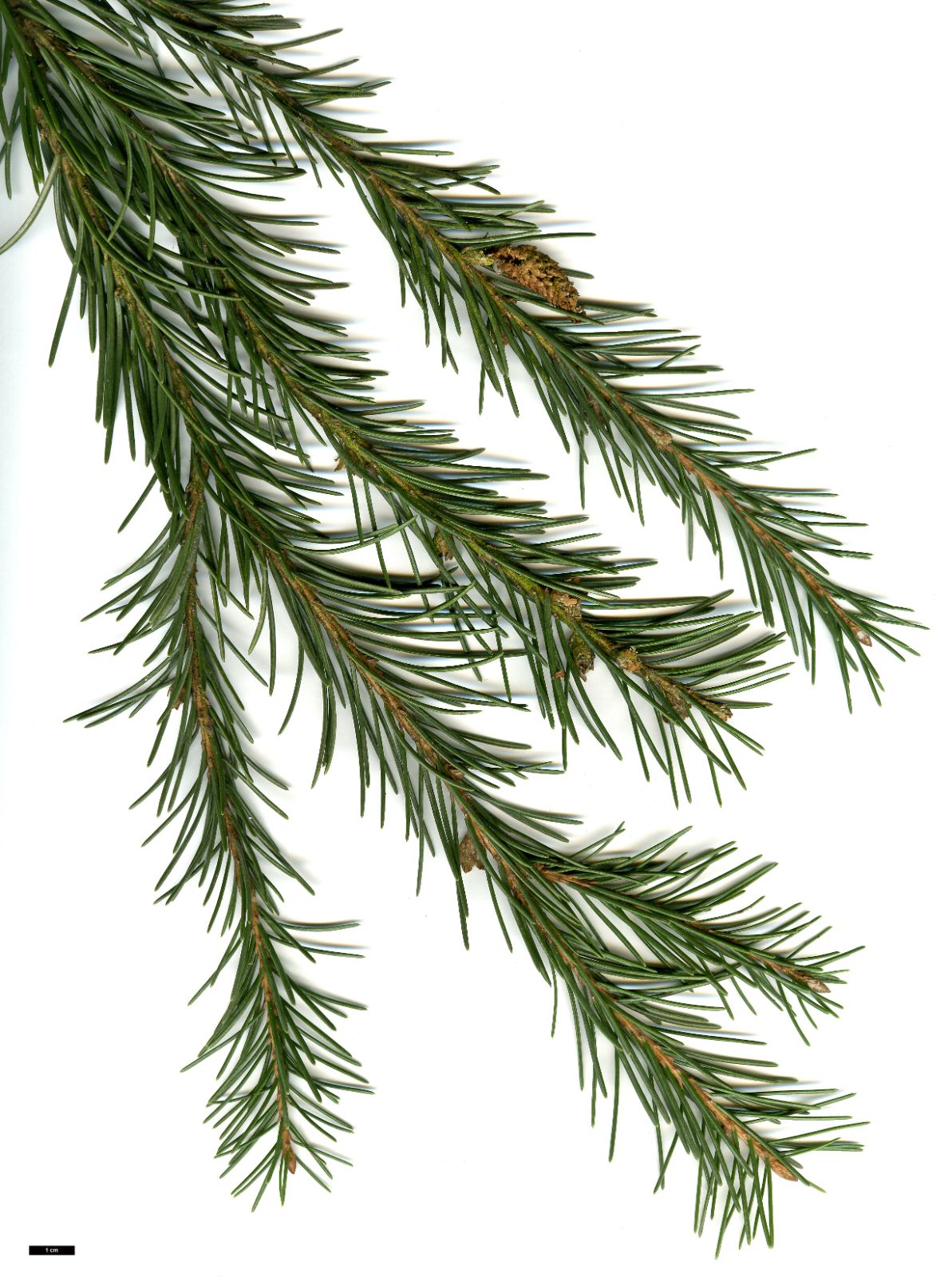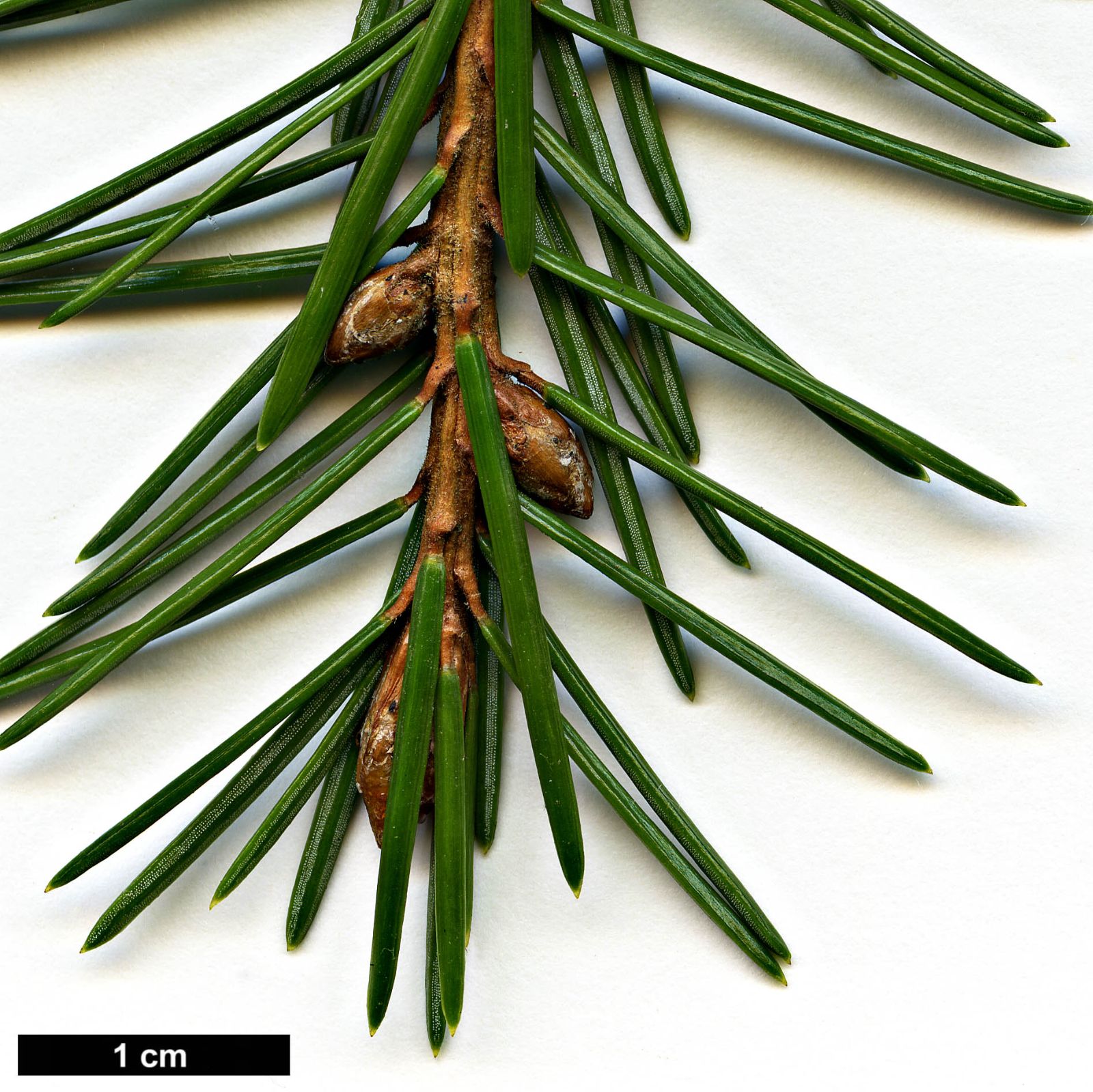Picea breweriana
Sponsor
Kindly sponsored by
This genus has been sponsored and new text is being prepared.
Credits
Article from Bean's Trees and Shrubs Hardy in the British Isles
Recommended citation
'Picea breweriana' from the website Trees and Shrubs Online (treesandshrubsonline.
Genus
Other taxa in genus
- Picea abies
- Picea alcoquiana
- Picea asperata
- Picea brachytyla
- Picea chihuahuana
- Picea crassifolia
- Picea engelmannii
- Picea farreri
- Picea glauca
- Picea glehnii
- Picea jezoensis
- Picea koraiensis
- Picea koyamae
- Picea likiangensis
- Picea linzhiensis
- Picea × lutzii
- Picea mariana
- Picea martinezii
- Picea maximowiczii
- Picea meyeri
- Picea morrisonicola
- Picea obovata
- Picea omorika
- Picea orientalis
- Picea polita
- Picea pungens
- Picea retroflexa
- Picea rubens
- Picea schrenkiana
- Picea sitchensis
- Picea smithiana
- Picea spinulosa
- Picea wilsonii
A tree up to 120 ft high in the wild, the trunk 2 to 3 ft in diameter, the branches ultimately pendulous, with the final ramifications slender, whip-like, and often 7 to 8 or even 12 ft long, but no thicker than a lead pencil, and hanging perpendicularly; pyramidal and stiffly branched when young. Leaves pointing forwards, and arranged about equally all round the shoot, 1⁄2 to 1 in. long, 1⁄20 to 1⁄12 in. wide, blunt at the apex, somewhat tapered at the base; one side dark glossy green without stomata, the other grey with stomatic lines. Cones cylindrical-oval, about 3 in. long, purple, the scales rounded and entire at the margins. Bot. Mag., t. 9543.
Native of the Siskiyou Mountains of California and Oregon, where it occurs in comparatively small numbers in a few places at about 7,000 ft altitude; discovered by W. H. Brewer, the Californian botanist. A single plant was sent by Prof. Sargent in 1897 to Kew, where it thrives very well but grows slowly in height. It first bore cones in 1920 and measures 36 × 2 ft (1963). Fourteen seedlings collected in the wild reached Dawyck in Peeblesshire in 1911 (see Conifers in Cultivation (1932), p. 198) and there were probably other introductions at about the same time or slightly earlier.
With its curtained branches, P. breweriana is one of the most striking and ornamental of conifers, and only its scarcity in commerce prevents it from being more widely planted. It is many years before seedling plants begin to develop the characteristic branching, but they are still to be preferred to grafted ones. Among the oldest specimens in the country are: Vernon Holme, Kent, 53 × 5 ft (1973); National Pinetum, Bedgebury, Kent, pl. 1926, 30 × 4 ft (1968); Sheffield Park, Sussex, pl. 1910, 46 × 41⁄4 ft (1974); Leonardslee, Sussex, 44 × 33⁄4 ft (1969); Wakehurst Place, Sussex, pl. 1915, 46 × 4 ft (1970) and another in the Valley, 52 × 33⁄4 ft (1973); Exbury, Hants, 39 × 41⁄2 ft (1968); Hergest Croft, Heref., pl. 1916, 42 × 33⁄4 ft(1963); Dawyck, Peebles., pl. 1911,thebest 51 × 53⁄4 ft (1974).
From the Supplement (Vol. V)
specimens: Kew, pl. 1897, 46 × 21⁄4 ft (1979); Hall Place, Kent, pl. 1928, 40 × 41⁄2 ft (1984); Tongs Wood, Kent, 60 × 51⁄2 ft (1984); Vernon Holme, Kent, 53 × 5 ft (1973); National Pinetum, Bedgebury, Kent, pl. 1926, 41 × 41⁄2 ft (1981); Sheffield Park, Sussex, pl. 1910, 56 × 43⁄4 ft (1982); Leonardslee, Sussex, 60 × 31⁄4 ft (1984); Wakehurst Place, Sussex, pl. 1915, 51 × 41⁄4 ft (1984) and another in Horsebridge Wood, 63 × 41⁄4 ft (1981); Hergest Croft, Heref., 59 × 61⁄4 ft (1985) and, pl. 1916, 66 × 43⁄4 ft (1985); Dyffryn Gardens, near Cardiff, 50 × 51⁄2 ft (1984); Dawyck, Peebl., pl. 1911, best 62 × 6 ft (1984); Stobo Castle, Peebl., 56 × 41⁄2 ft (1984); Glentanar, Aberd., pl. 1922, 59 × 6 ft, a superb tree (1980); Biel, E. Lothian, 56 × 33⁄4 ft (1985).









